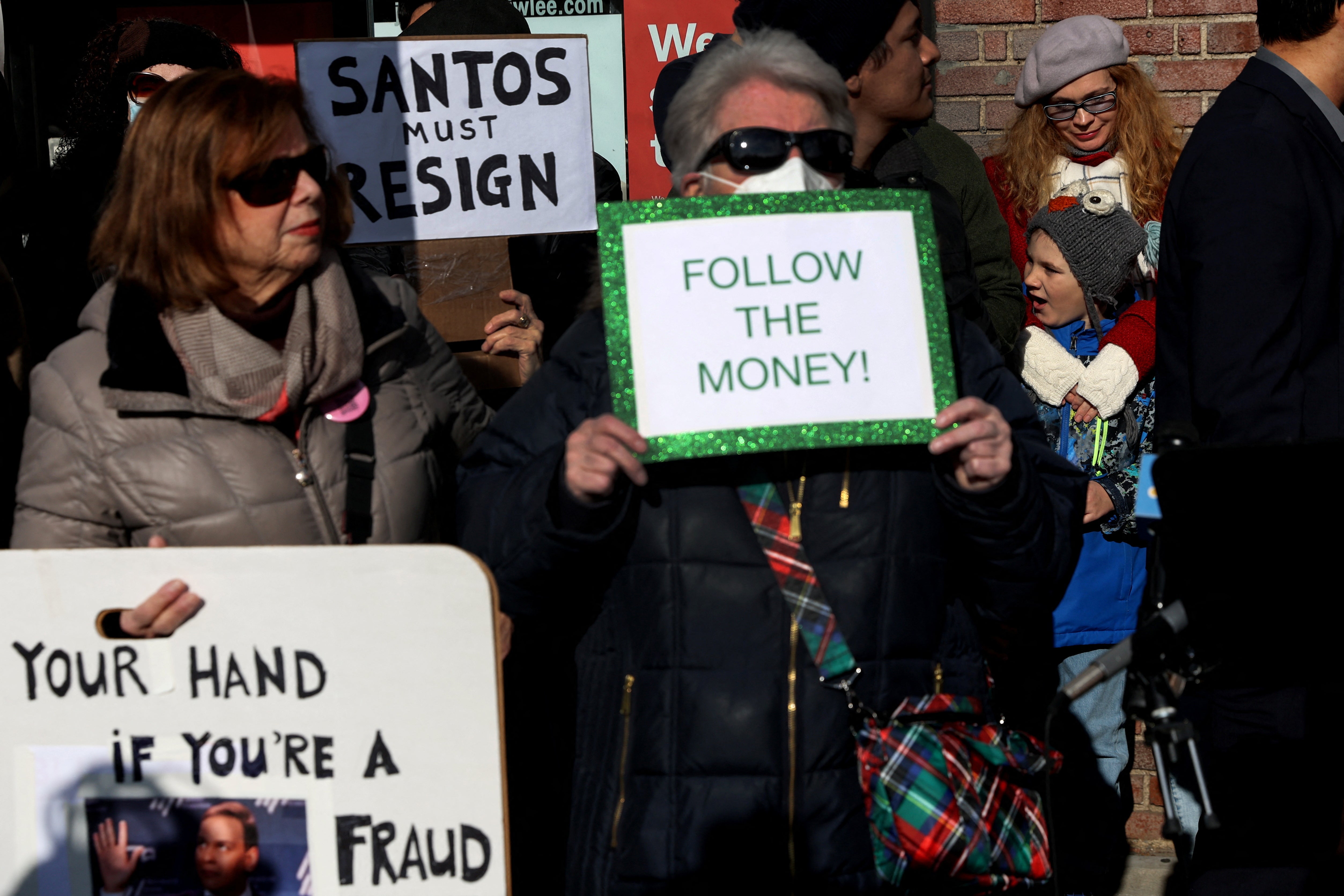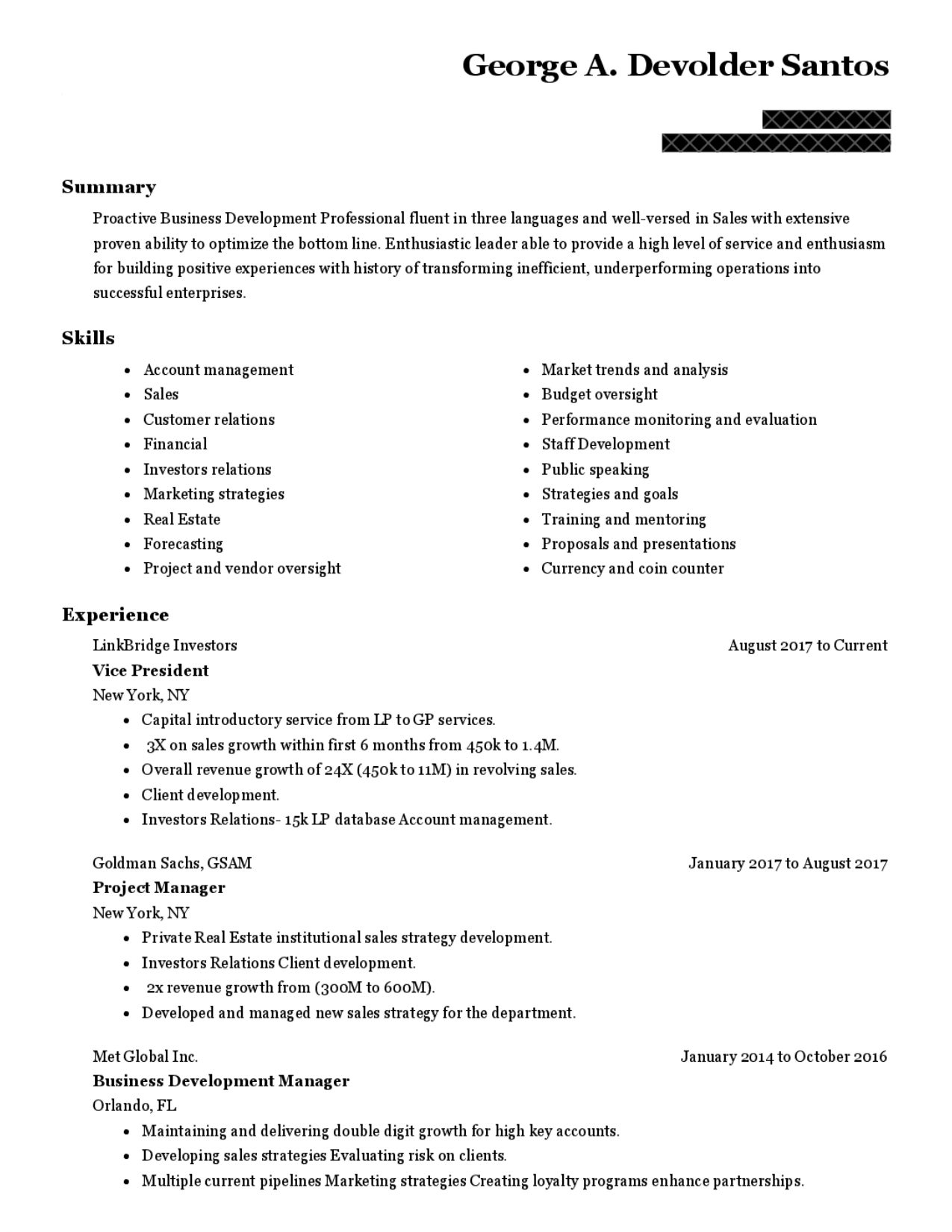
Long Island’s Gold Coast is known to many as the backdrop for a story about a fictional character who concocted fabulous tales about his past to climb the ranks of New York’s high society in a ceaseless quest for the object of his desire.
I’m talking, of course, about George Santos.
Nearly 100 years after F Scott Fitzgerald set The Great Gatsby in these same opulent shores, the 34-year-old Republican congressman has once again drawn the eyes of the world onto the eastward-stretching leg of New York City, and invited comparisons to the titular character of that Great American Novel along the way.
Where Jay Gatsby ultimately failed in his efforts, Santos succeeded in his. A man who repeatedly lied about his own history, from claiming his mother died on 9/11, to falsifying his education and net worth — not for love, but for donations, votes and influence — was elected to a seat in one of the most powerful legislative bodies in the world.
So, how did he do it? How did he fool so many people? How did no one know? The truth is, many did. But no one listened to them.
One of those people is Grant Lally, an attorney and publisher of the North Shore Leader, a newspaper that covers the third congressional district that Santos now represents.
He remembers the first time he met George Santos. It was 2020, and the then-31-year-old was making his first run at the seat he would later hold. A lunch was arranged between the publisher and the candidate.
“I thought he was a completely non-serious candidate. He was weird,” Lally tells The Independent during a recent interview at his law office in the Third District’s Mineola.
Lally had reason to be interested in Santos’s political career. Not only did he publish the local newspaper, but he once ran for the same congressional seat, losing in a close-fought race. He knew all the local Republican powerbrokers and Santos was keen for his support.
“My initial reaction was that he was sort of childish and boastful, and he bragged about his money and his wealth, but he didn’t carry himself in the way that someone who had been successful in finance would carry themselves,” he says.
Santos would lose that first attempt by 12 points to Democrat Tom Suozzi, and he quickly turned to election conspiracy theories to justify his loss.
“They did to me what they did to Donald J. Trump, they stole my election,” Santos told a crowd at the Stop the Steal rally in Washington DC on January 5, 2021.

He didn’t wait long to launch another campaign for the same seat, but not many people took Santos seriously. He was considered a minor embarrassment, at worst — and one that couldn’t do much harm, primarily because the boundaries for the NY03 congressional district were redrawn in February 2021 to make it an even more heavily Democratic seat. Republicans didn’t have much to lose by letting him run again, which he did in an unopposed primary.
“People were already calling him George ‘Scamtos’ because they assumed that his campaign was being run just to enrich himself,” Lally says.
Then came a surprise, one of those strange quirks of history. In June of last year, after Santos’s primary but before the midterms, a New York judge threw out the Democratic-leaning map and redrew NY03 into a Republican-leaning district. Santos, a supposedly non-serious candidate, was suddenly on the verge of becoming a congressman.
“I call it a reverse bait and switch,” says Lally. “Here was a sacrificial lamb, kind of a weirdo, and suddenly he finds himself as the nominee in a district that favours his party.”
Had the Republicans known the map would be redrawn, they would have fielded an established candidate. As it happened, Santos was the nominee. It was the beginning of a long nightmare for the people of New York’s third congressional district.
The first hammer dropped in September when Santos filed his personal financial disclosure documents with the clerk of the House of Representatives — a requirement of anyone running for the House. The documents were filed 18 months later than they should have been. What was in them shocked Lally.
“They were ridiculous,” he says. “People were saying he must be sitting around a table on a Friday night drinking wine, laughing about the numbers he was putting down. None of it was serious.”
Lally’s newspaper decided to do something about it. In a September story, more than before the vote, the North Shore Leader ran a story on Santos’s personal financial disclosures that noted an “inexplicable rise” in his net worth from $5,000 in 2020, “no bank accounts, no stock accounts, no real property,” to $11mn in 2022. It also noted the inexplicable claims he made about his personal wealth and properties, including that he "loaned" his campaign some $600,000, a sum that didn’t show-up in his newly-filed 2022 personal financial disclosure.
Then, in an extraordinary move for a Conservative-leaning newspaper run by a former Republican candidate, the North Shore Leader endorsed his Democratic rival.

Santos won his election with 54 per cent of the votes. A total of 142,673 people turned in their ballots for a man many Republicans knew was at best a fantasist, and at worst a crook. It looked as though Santos may have weathered the storm — he was a Congressman-elect, and would soon be taking his seat.
Things changed in December, when another newspaper picked up the story. The New York Times, an institution with significantly more resources available to it than the North Shore Leader, printed its own expose with the headline: “Who Is Rep.-Elect George Santos? His Résumé May Be Largely Fiction.”
The story picked up on the falsehoods discovered by the North Shore Leader and found a dozen more. The investigation found that Santos had lied about working for Citigroup and Goldman Sachs, he had lied about the college he attended, he fabricated an animal charity, that the company from which he had earned a salary of $750,000 and dividends of $1m did not have any online presence, that he lied about saying he lost “lost four employees” in the Pulse nightclub shooting in Orlando, Florida, in 2016, and that he faced criminal charges in Brazil for cheque fraud.
The revelations kept coming. Just two days later, Forward reported that Santos had lied about his parents escaping the Holocaust.
The stories caused a firestorm and a flurry of national press attention for Santos. Nonetheless, he was sworn into Congress on January 7.
In that moment, he was no longer just a problem for New York Republicans. On the same day Santos was sworn in, and following a protracted battle with the right wing of his own party, Kevin McCarthy took over as the new House Majority Leader with a lead of just four seats. He was now faced with the prospect of losing a crucial vote if Santos resigned, and was in no mood to remove him.
Just days into his term, McCarthy answered the growing calls for him to take action against Santos, telling a news conference that he has “a long way to go to earn trust” but adding: “The voters of his district have elected him. He is seated. He is part of the Republican conference.”
Back at home, a storm was brewing for Santos.
I don’t see Santos as much of a tragic figure like Gatsby. He’s a deeply unsympathetic character the more we learn about him— Kirk Curnutt, director of the F. Scott Fitzgerald Review.
On an overcast day in New York’s third congressional district, two young staffers can be seen talking on the phone inside Santos’s office on the main street of Douglaston. The staff have yet to replace the sign above the door, so the name of his Democratic predecessor hangs over it — an unfortunate metaphor for a man who now stands accused of having multiple identities.
When Congress is not in session, lawmakers usually make use of the time off to spend time in their constituency. But Santos has not been seen here for some time. When he is seen in public, he is often chased through the corridors of the House of Representatives by reporters shouting questions about the latest revelation about his past.
As I walk into Congressman Santos’s office to get some answers to some of these questions, I’m quickly ushered out by one of those young staffers.
“All media knows to stay outside,” they say, in a tone that suggests I’m not the first to try their luck. “You’re welcome to contact our communications team in DC.”
“When will you change the sign?” I ask, pointing to the fading green awning.
“They’re in the process of doing it,” the staffer replies.
George Santos’s DC office did not respond to a request for comment from The Independent.
I’m not the only one having difficulty finding Santos. Many of his constituents are facing the same issue, and his Democratic opponents have taken to holding a series of increasingly creative press conferences to point this fact out.
Josh Lafazan, a Democrat who ran for the same district and now serves in the Nassau County Legislature, started a campaign called ‘Where’s George?’ — which encourages members of the public to take pictures of Santos if they see him in the district. He held a press conference outside of Santos’ district office to announce its launch. A little over a week later, he held a press conference at the airport to call on authorities to seize Santos’s passport because he is a flight risk.
“George Santos thinks this story will die down. He thinks we’ll just forget about this. I’m here to remind George that Long Islanders don’t give up, and we will make every day in this district a living nightmare for him until he resigns,” Lafazan tells The Independent while standing outside of Santos’s office.
The revelations about Santos sparked a grassroots campaign called Concerned Residents of NY03, a self-described non-partisan group that began on Facebook and is committed to removing Santos from office.
“I was just so angry that when once all this stuff came out about George Santos, that we reached out to other folks in the district, really through social media, and we decided to start being active,” Jody Kass, one of the founders of that group, tells The Independent after one of her many press conferences calling on Santos to resign.

Representatives from Concerned Citizens now appear regularly on national television, and their numbers are growing. Kass says the scale of the falsehoods told by Santos caught everyone by surprise.
“We don’t have a game plan. I don’t think anyone does. The country has never seen an impostor in Congress before. So, what’s the path to boot him out?” she says.
It’s not just Democrats who want Santos out, either. Local Republicans — the ones who will talk — have also expressed their anger. Matthew Walters owns a deli just around the corner from Santos’s office in Douglaston. It’s been in operation since 1969 and claims to make the best potato salad in New York.
“What I’ve heard is pretty crazy,” he tells The Independent. “How do you make it that far and literally make up everything? Graduating from college, not graduating, working for these places? As a Republican … get them out of here. You lie about that many things, who’s going to take you seriously now?
Local Republican officials, too, have been clear about their feelings toward Santos. Leaders of the Nassau County Republican Party, which covers NY03, held a press conference earlier this month in which they called on Santos to resign.
“He deceived voters,” chairman Joseph G. Cairo said. “His lies were not mere fibs. He disgraced the House of Representatives. … He’s not welcome here at Republican headquarters.”
But there is a disconnect between pressure on Santos at home in his district, and back in Washington. While most here in NY03 want Santos gone, Kevin McCarthy needs him, and appears willing to let him hang on. To expel Santos would require a vote to be called by McCarthy in the House, and for two-thirds of House members to vote him out. Both of those options seem unlikely.
Besides how to get Santos out, a bigger question looms — how did he get succeed in the first place?
Grant Lally, the newspaper publisher, has a theory.
“Part of what George Santos always did, and this made him a good con artist, he always tried to ensnare and implicate others in his activities,” he says.
“By convincing people to fundraise for him, they are involved in his scheme, essentially” — this made them more reluctant to speak out lest they be implicated, he adds.
The other reason, he adds, is tribalism: “They vote Republican. They vote Democrat. They almost don’t care who’s and who’s on the ballot.”

So, who is George Santos? The answer to that changes every day.
He rose to power by courting — and fooling — the wealthy elite that call the Gold Coast home; who likely stare out across the bay from their castle-like mansions at those same blinking dock lights that consumed Fitzgerald’s creation. But experts on The Great Gatsby have bristled at the comparison.
“I think it’s natural because Santos represents parts of Queens and Long Island in which Gatsby takes place, most notably the Gold Coast where Gatsby’s mansion would have been,” says Professor Kirk Curnutt, associate professor of English at Troy State University and executive director of the F Scott Fitzgerald Review. “It’s almost irresistible, like some English teacher whipped up a spell for this to happen in that location.”
Curnett continued, telling The Independent: “But where the connection goes wrong I think is that Gatsby is much more sympathetic. Yes, he’s a crook, but his criminality comes from his idealism, which doesn’t make it right but makes it comprehensible. I don’t see Santos as much of a tragic figure like Gatsby. He’s a deeply unsympathetic character the more we learn about him.”
He describes Santos as something closer to a “twisted immoral version of Gatsby”
In the last few days, revelations about Santos have continued to emerge. He has been accused of stealing $3,000 from a disabled US Navy veteran who was raising money to save his service dog from a life-threatening stomach tumour, and of lying about his past as a drag queen in Brazil while supporting anti-LGBT laws.
Still, he refuses to resign; he beats on, like a boat against the current, borne ceaselessly into the past.







